There is a lot you can do to help save our planet from investing in eco-friendly products for your home to recycling to avoid waste and keeping products in use for as long as possible by buying well and mending rather than replacing.
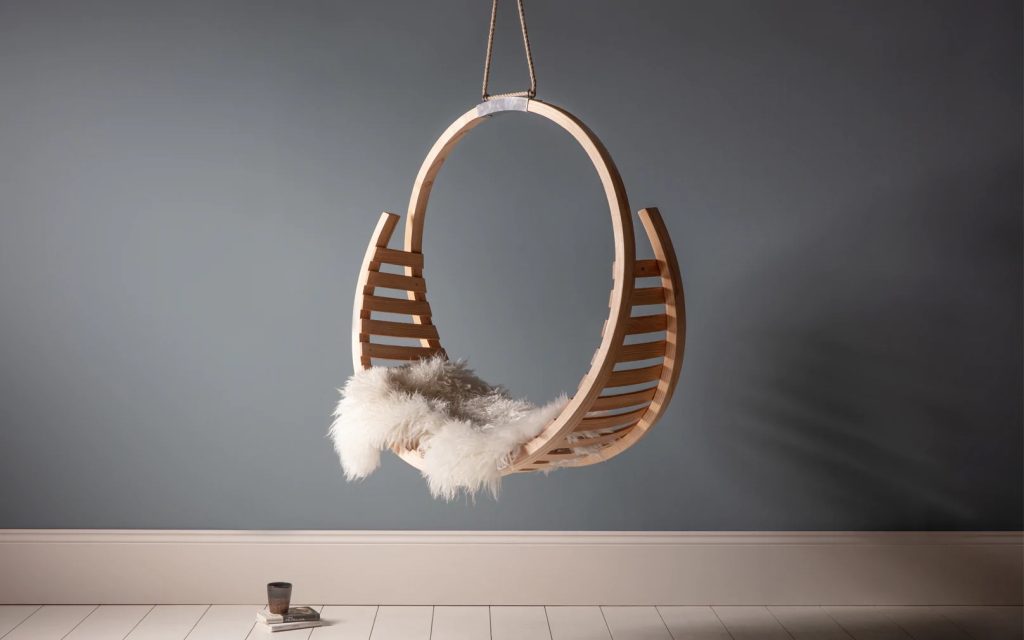
Nowadays, during the design process, brands are considering the materials and processes used to manufacture products and how the products they make can be repaired or even recycled again to extend their life in a bid to reduce emissions and reduce damage to the environment.
From lights bulbs that will last 30,000 years to worktops made from recycled glass, here are some more of my favourite sustainable products and brands to help make your house an eco-friendlier place to be.
Sustainable lighting
Choosing vintage or sustainably producing lighting is another way you can really make an environmental impact.
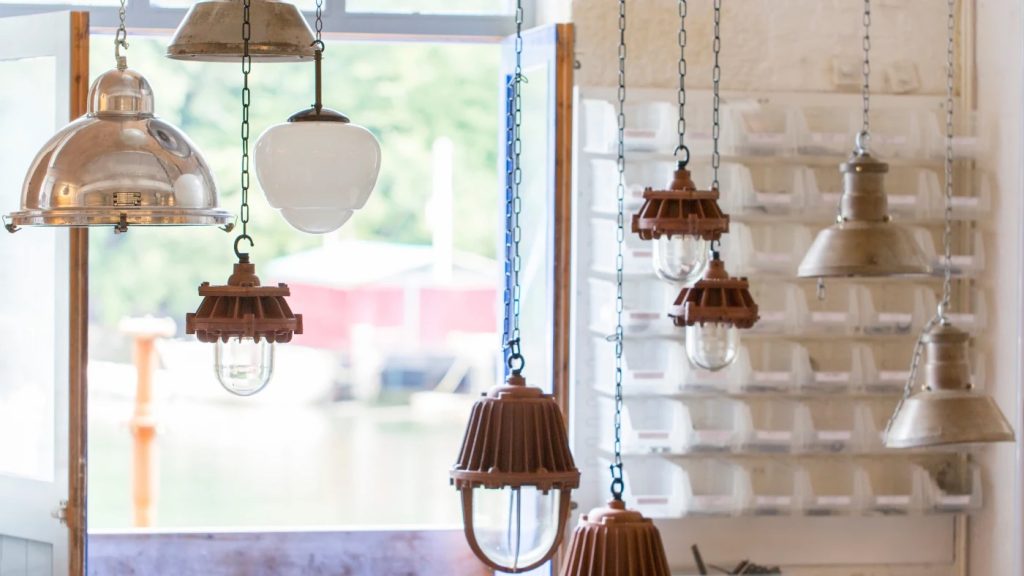
Skinflint Design sources lights made between 1920 and 1970 and restores them ready to use with modern lighting systems. From lights from former Czechoslovakia, to rare 1960s textured glass ceiling lights, you’ll discover a range of original retro lights to add a classic vintage touch to your interior. The industrial lighting collection is packed full of beautiful, reclaimed finds that have been salvaged from intriguing locations across Europe. From one-off rarities to large runs, oxidised pendants to vintage enamels, and caged ceiling lights to bulkhead wall lights and restored traffic lights, each light has been expertly restored and features its very own fascinating salvage story.
Tom Raffield also creates sustainable wooden lighting in Cornwall using FSC wood and traditional steam bending techniques. Each light is a piece of art.
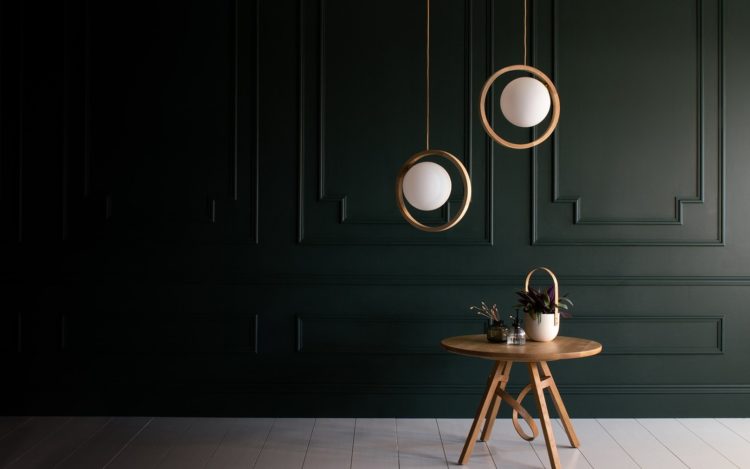
Look for energy efficient lightbulbs from a company like Tala. The bubs are expensive but are made to last for 30,000 years! They are so gorgeous you can just hang them with no lampshade to distract from their naked beauty.
Natural and organic fabric
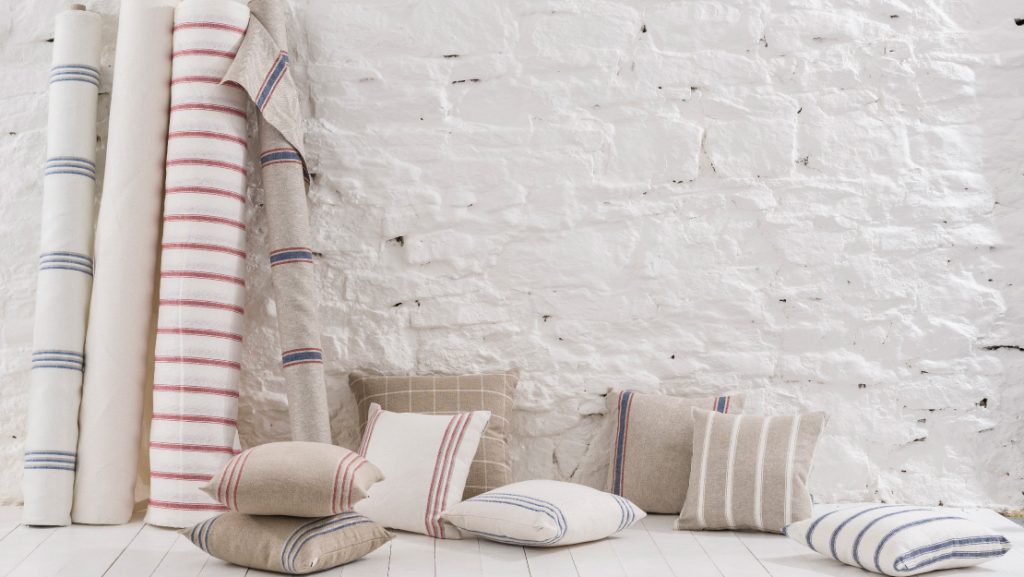
When looking for sustainable fabrics you need to firstly ask where the material comes from. Does it come from stripping raw material or damaging farming practices or is it an animal-based product? Then, ask yourself when made into fabric, are the raw materials bleached or coloured with chemicals? Finally, can the fabric be recycled after its useful life has ended or will it end up in landfill sites?
If a piece of fabric is sourced and processed in an eco-friendly way and can be recycled, it’s a sustainable choice. Organic cotton is one of the most natural fabrics out there. It’s grown without pesticides and synthetic fertilizers and processed with no chemicals. Organic linen is derived from the flax plant and its growth requires very little fertilizer, pesticide, and irrigation. Both make brilliant choices for interior fabrics, especially if they are woven in the UK.
Ian Mankin is committed to producing fabrics and furnishings of the highest possible quality, from 100% natural and organic fibres in timeless and elegant designs at their weaving mill in Burnley, Lancashire. During the weaving process they add no chemicals – so the only finishing treatment given is a wash in pure Pennine water. Good for you and good for the environment! The collection is made up of a signature range of stripes, checks and plains which work beautifully in the home.
Responsibly sourced kitchens
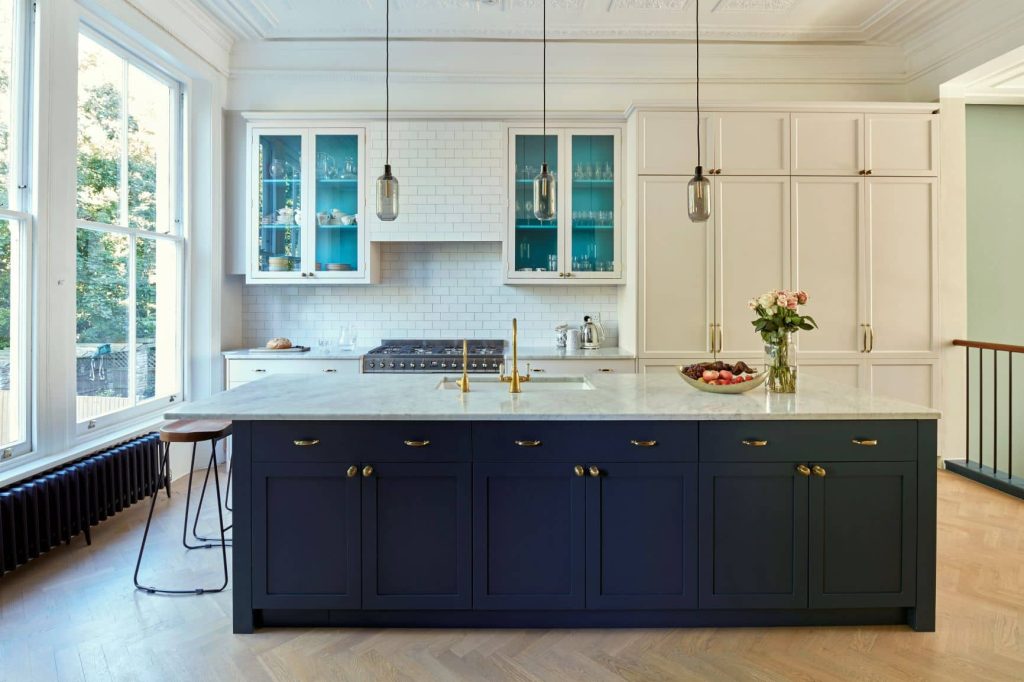
Choose a company like Naked Kitchens who pride themselves on truly sustainable sourcing, manufacturing and design, and who build high-quality kitchens that will last a lifetime. Naked Kitchens make sure that all the materials they use in their kitchen projects are environmentally friendly and they build all their products at their Norfolk showroom which means they don’t import cabinetry produced overseas as many high street stores do.
Alternatively, buy a used or ex-display kitchen from a specialist retailer like Used Kitchen Hub or Used Kitchen Exchange and you can get huge discounts and save the planet.
Eco-friendly worktops
Aside from your kitchen cabinets, it is very important to choose the most eco-friendly worktop options.
Recycled glass is a popular option, while quartz surfaces made from materials that would otherwise have ended up in landfill, are another good eco-friendly choice. Quartz is good choice if you want the look of granite or marble for less too!
Eco concrete worksurfaces can also be created using recycled materials to reduce the environmental impact of concrete’s manufacturing process.
Natural bathroom materials
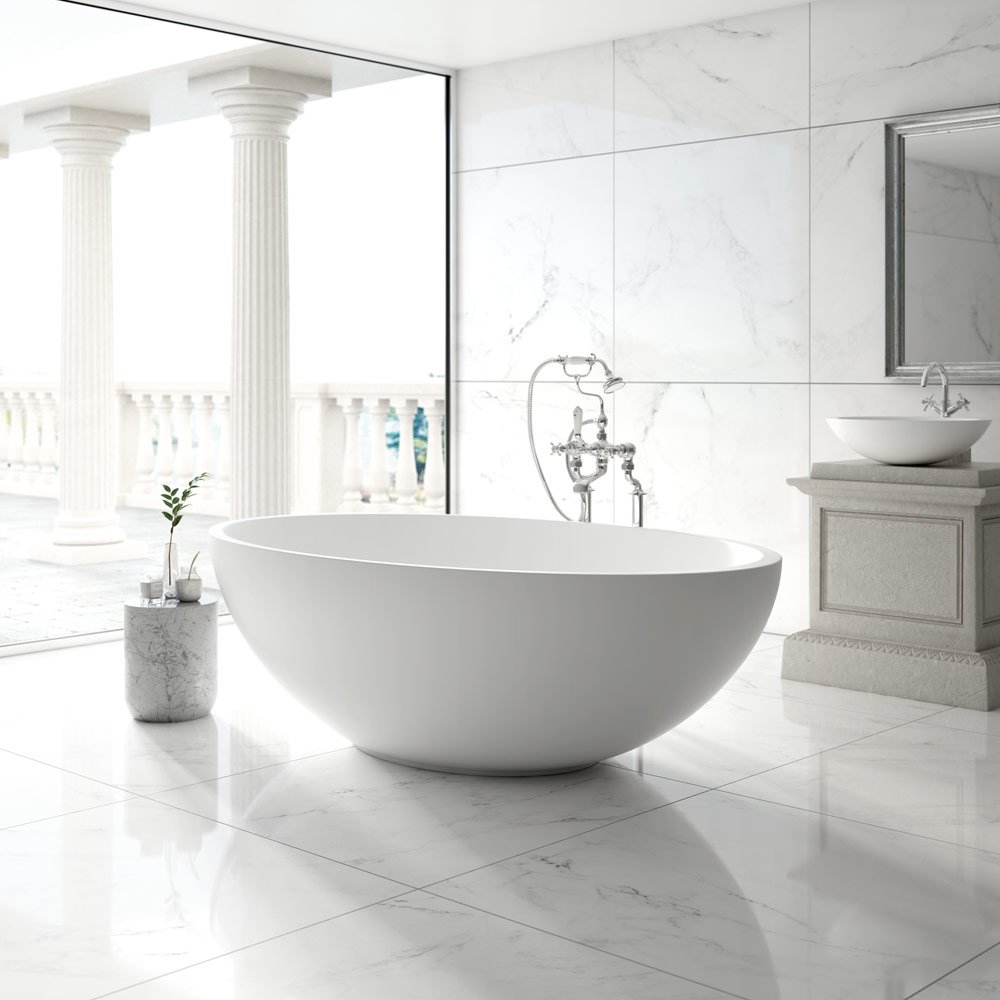
When planning a new bathroom, look for natural stone bath or basin – they will look stunning but are also made to last. Stone baths will keep bath water warmer for longer – important with energy prices rocketing this winter. Stone bath designs offer everything from sleek, ultra-modern styles to classic freestanding bathtubs. Steel is another great eco-friendly alternative to the traditional acrylic bathtub. It is a natural material, so it is fully recyclable. Like stone, is also excellent at retaining heat.
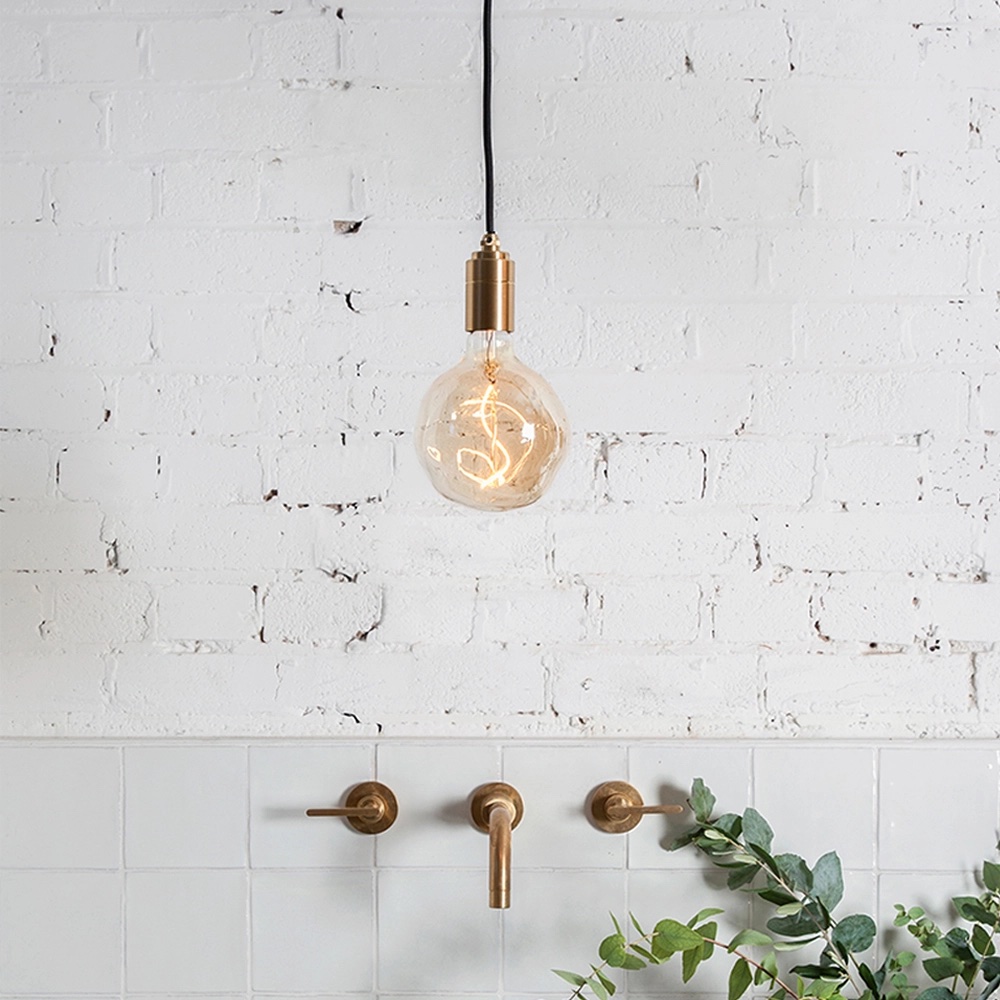
Make sure you install a dual flush toilet. Toilet flushing accounts for a huge amount of water used in the home and dual flush models use as little as 20% compared with older toilets.
Buy well
Subscribe to the the ‘buy once and buy well’ approach to interiors and furniture consumption and you’ll be focusing on sustainability through longevity. Something that does not break and have to be replaced or that can be repaired or recycled is what you are looking for. Alternatively buy vintage or pre-loved online or in reclamation yards or flea markets.
Conscious choices in interior design can help conserve energy, reduce waste and pollution and help create healthy environments for us all. There are so many ways you can shop sustainably so make your next purchase for the home an eco-friendly one.



